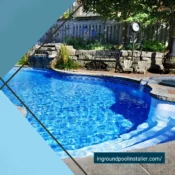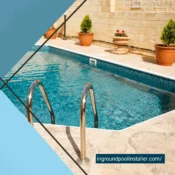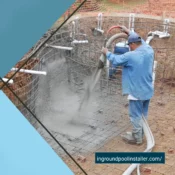Maintaining Your Inground Pool: Tips and Best Practices

Maintaining Your Inground Pool: Tips and Best Practices
Proper maintenance is key to ensuring the longevity and aesthetic appeal of your inground pool. This article provides essential tips and best practices to help you keep your pool in pristine condition all year round.
Regular Cleaning and Skimming
Debris Removal and Surface Cleaning
Regular skimming of leaves and debris, along with brushing the pool's walls and floor, is essential to prevent algae growth and maintain water clarity. Investing in an automatic pool cleaner can also be a great time-saver for busy homeowners.
Vacuuming the Pool
Weekly vacuuming of your inground pool is recommended to remove dirt and debris that the skimmer misses. This helps in keeping the pool's water clean and reduces the need for chemical treatments.
Water Chemistry and pH Balance
Testing and Balancing Water Chemistry
Maintaining the right chemical balance is crucial for a healthy pool environment. Regularly test your pool water for pH, chlorine, and alkalinity levels and adjust them as necessary. This prevents bacteria growth and ensures the safety of swimmers.
Shock Treatments
Periodic shock treatments are important for keeping the water clear and free of harmful contaminants. Follow the manufacturer’s instructions for the appropriate amount of shock treatment based on your pool size.
Pool Equipment Maintenance
Caring for Filters and Pumps
Regularly check and clean your pool’s filter and pump. A well-maintained filter system is essential for clear water and efficient pool operation. Ensure that the pump is running smoothly and address any unusual noises or malfunctions promptly.
Winterizing and Seasonal Care
If you live in a region with seasonal weather changes, properly winterizing your inground pool is essential to prevent damage. This includes balancing the chemicals, lowering the water level, and covering the pool to protect it from debris and freezing temperatures.
Professional Inspections and Services
Regular Professional Check-Ups
Even with diligent care, having a professional inspect your pool annually can help identify potential issues early. This can include checking for leaks, inspecting equipment, and ensuring all safety features are functioning properly.
Updating and Upgrading Pool Features
Consider upgrading to energy-efficient pumps, LED lighting, or saltwater systems. These modern features can enhance your pool experience while reducing maintenance efforts and costs.
In conclusion, maintaining your inground pool requires a combination of regular cleaning, chemical balance monitoring, equipment care, and professional services. By following these tips and best practices, you can ensure a safe, enjoyable, and beautiful pool for years to come.
All Categories
- Concrete
- Concrete
- Concrete pools
- Construction
- Custom Features and Add-ons
- Design
- Design
- Design
- Design & Construction
- Design and Planning
- Features & Customization
- Infinity edge
- inground pool
- inground pool builder
- inground pool installer
- Installation
- Installation Process
- Legal & Administrative
- Materials
- planning and design
- Pool Aesthetics and Customization
- Pool Design
- Pool Equipment
- Pool Features
- Pool Features
- Pool Installation Process
- Pool Materials
- Pool Materials
- Pool Types
- Project Planning
- Renovation
- Resurfacing
- top sights
- Types of Inground Pools
- Types of Inground Pools
- Types of Inground Pools
- Types of Inground Pools
- Water Treatment



